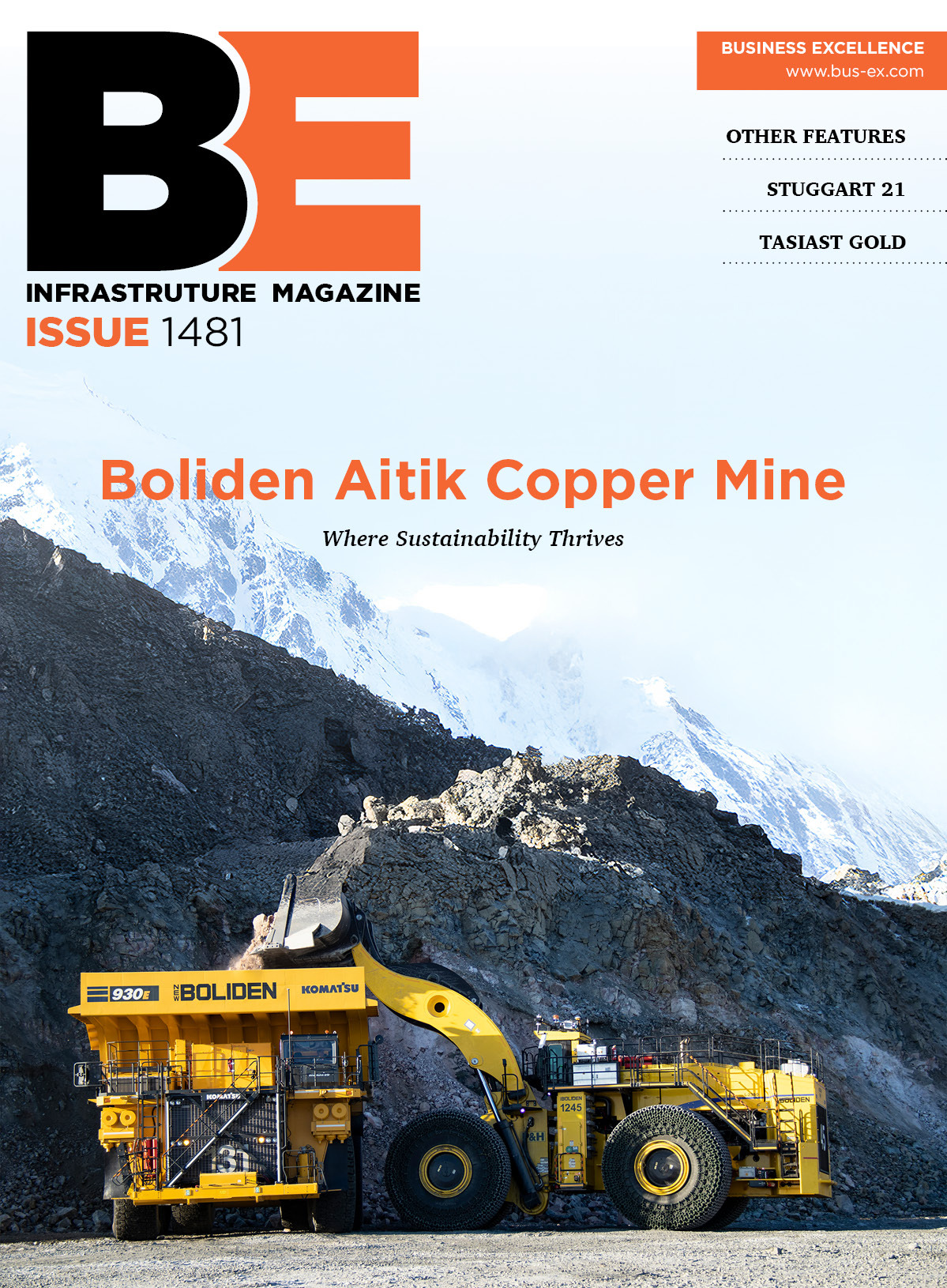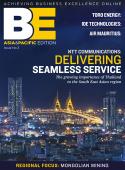
What High Prices Actually Reveal About Your Organization
Gold at $2,800. Your AISC at $1,100. Margins that would make a tech CEO jealous. Your board wants dividends. Your shareholders want buybacks. Your government wants windfall taxes. And somewhere in this noise, you're supposed to be building a company that matters in 2040.
This isn't an article about whether high gold prices are good or bad. That's undergraduate-level analysis. This is about what high prices reveal—about your organization's strategic seriousness, your board's courage, and whether you're building a mining company or operating a liquidation vehicle with drill rigs.
After three decades in this industry, through four complete cycles, I'll tell you what nobody says in quarterly calls: high gold prices are a diagnostic test. They expose which companies are serious and which are pretending. Let's discuss what that actually looks like when you're moving billions of tonnes of rock.
THE CAPITAL DISCIPLINE TEST: Do You Actually Mean It?
Every mining company claims capital discipline. Every single one. "We use conservative price assumptions." "We maintain strict hurdle rates." "We focus on returns, not production."
Then gold hits $2,500 and suddenly that project in Burkina Faso that didn't work at $1,400 looks "interesting" at $1,800. The board member who understands DCF modeling is outvoted by three who just see $800 margins. And you approve a development that requires a decade of elevated prices to generate acceptable returns.
The Question That Separates Pretenders from Performers:
"If gold were $1,300 tomorrow, would we still be comfortable with this decision?"
If the answer is no, you're not making an investment decision—you're making a leveraged bet on sustained high prices using shareholder capital. That's not mining. That's speculation with explosives.
What Actual Discipline Looks Like:
- Fixed price deck regardless of spot: Nevada Gold Mines doesn't get approved at $2,800 gold just because spot is there. It gets approved because it works at $1,200 with a 15% IRR. That's discipline.
- Front-loading capital intensity: If a project requires phases 2 and 3 to generate acceptable returns, you don't have a project—you have a commitment device that locks future management into throwing good money after bad.
- Jurisdiction quality over grade: A 2g/t deposit in Nevada is worth more than a 5g/t deposit in a jurisdiction where your contract gets renegotiated every time gold spikes $200. High prices don't fix political risk—they amplify it.
The companies that got destroyed in 2013 didn't fail because gold prices fell. They failed because they made decisions in 2010-2011 that only worked if prices stayed elevated forever. They're still paying for those decisions.
THE PORTFOLIO ARCHITECTURE REALITY: Optionality Through Design
Here's where most analysis gets mining wrong: the suggestion to "reduce production and bank ounces underground."
That's not how mining works. Let me explain what actually creates strategic optionality.
The Geotechnical Reality:
Once you've exposed a pit wall, you mine it or you manage slope stability issues forever. Once you've developed an underground mine, your fixed costs run whether you're producing 100,000 ounces or 200,000 ounces. You can't mothball a mine like you can shut down a factory.
The mining operations that create genuine optionality don't slow down Tier-1 assets during booms—they use boom cash flow to advance early-stage projects through permitting and development.
Strategic Optionality in Practice:
You're not slowing Cortez to "preserve ounces." You're running Cortez at optimal throughput and using that cash flow to:
- Advance Fourmile through the permitting nightmare so you have production options in 2032
- Acquire exploration ground in proven districts where you can define resources over 10-15 years
- Build relationships with governments and communities in Tier-1 jurisdictions where permitting takes a decade but license to operate is secure
This is real optionality—having choices about what to develop next, not romantic notions about banking ounces underground while your pit walls deteriorate and your workforce disperses.
The Uncomfortable Truth About Production Restraint:
Tell your operation in Mali you're reducing production while gold is at $2,800 because you want "strategic flexibility," and watch what happens:
- Your government renegotiates your contract within 90 days
- Your workforce's A-players get recruited by competitors within 120 days
- Your community relationships collapse when local suppliers lose revenue
- Your investors dump your stock because they can't explain your strategy to their committees
Production discipline means maintaining optimal throughput from your best assets, not theatrical production cuts that destroy organizational capability.
THE RESOURCE NATIONALISM REALITY: The Conversation We Avoid
Here's what doesn't get discussed in polite company at mining conferences: high gold prices trigger government renegotiations, windfall taxes, and contract revisions with the reliability of geotechnical failure in reactive ground.
The Pattern We've Seen Repeatedly:
- Tanzania 2017: Acacia's concentrate exports banned, forced into government renegotiation
- DRC ongoing: Mining code revisions increasing royalties and state participation requirements
- Mali 2023: Windfall tax proposals whenever gold spikes
- Papua New Guinea: Perpetual renegotiation pressure on major projects
You can have the best orebody in the world, but if your fiscal terms get rewritten every time gold appreciates $500, you don't have an asset—you have a rolling negotiation with sovereign risk.
The Strategic Question Nobody Asks Publicly:
How do we structure deals that survive government renegotiation during price spikes?
The sophisticated answer isn't about contract terms—it's about value architecture that aligns host government interests with sustained operations.
This means:
- Front-loading government take: Structure deals where government share increases with price, but through formula rather than renegotiation. Bake the windfall sharing into the original agreement.
- Infrastructure value beyond mining: Build ports, power, roads that have value independent of mine life. Make your presence about economic transformation, not just extraction.
- Employment multiplication: Every direct job should create 3-5 indirect jobs. Make the mine's economic footprint too important to disrupt even when politicians need populist victories.
- Sovereign refining participation: The real value is moving up the chain. China controls 60% of global refining. Smart operators are partnering with host governments on domestic refining capacity—not because it's optimal economically, but because it creates aligned interests.
This isn't corporate social responsibility theater. This is strategic risk management that recognizes your greatest political vulnerability arrives exactly when gold prices spike.
THE TECHNOLOGY AND COST STRUCTURE TRANSFORMATION
Here's where the strategic operators separate from the pack: high prices fund the transformation that makes you competitive when prices normalize.
The conventional wisdom says high prices conceal operational mediocrity. That's backwards. High prices fund the investments that eliminate mediocrity if you have the discipline to make them.
What Smart Operators Do During Booms:
- Replace, don't sweat: That haul truck fleet generating $1,500 margins? Replace it with autonomous fleet while you can afford the capital and the transition friction. When margins compress, you'll be running 15% lower costs than competitors who sweated their assets.
- Processing transformation: Shut down old, inefficient circuits and install modern processing technology. Yes, you'll take a short-term production hit. But you'll emerge with 5% better recoveries and 20% lower processing costs that persist through the cycle.
- Energy infrastructure: Solar plus battery plus remaining grid connection isn't just ESG theater—it's structural cost reduction. Nevada Gold Mines doesn't pursue renewable energy because it's fashionable; it's because it changes the cost structure permanently.
- Water security: The mines that shut down in the 2030s won't close because of low gold prices—they'll close because they can't get water permits. Build closed-loop water systems, desalination capacity, and water rights now while you can afford it.
The Capital Allocation Reality:
When margins are thin, you defer maintenance, postpone rebuilds, and pray nothing breaks. When margins are fat, you can fund transformation that changes your position on the cost curve permanently.
The companies that dominated 2015-2020 weren't those that survived the crash—they were those that entered it with fundamentally lower cost structures because they invested during 2010-2014.
THE EXPLORATION IMPERATIVE: The Invisible Crisis
Here's the crisis nobody discusses publicly: the industry is not replacing reserves at the rate we're mining them, and junior exploration is functionally dead outside of major district plays.
The Structural Problem:
Tier-1 deposits (>5Moz, >15 year mine life, <$1,000 AISC, Tier-1 jurisdiction) are discovered at a rate of maybe 1-2 per year globally. We're depleting them faster than we're finding them.
The junior sector that historically found these deposits has been capital-starved since 2013. The generalist investors who funded exploration are gone. The prospect generators are dying.
What High Prices Should Fund (But Usually Don't):
This is the actual strategic imperative: use high price environments to ensure you have organic growth options in 2035.
Not through acquiring overpriced juniors at cycle peaks. Through systematic, disciplined greenfield exploration in districts where you already have infrastructure, knowledge, and social license.
The Uncomfortable Math:
To maintain production levels, you need to discover roughly 1.5x what you mine annually (accounting for conversion rates and permitting attrition). Almost nobody does this. Most companies are slowly liquidating their reserve bases while returning capital to shareholders.
That's a perfectly rational strategy if you're managing a yield vehicle. It's strategic malpractice if you're building a company that matters in 2040.
What Right Looks Like:
Allocate 3-5% of revenue to systematic exploration during boom periods. Not sexy. Not immediately value-accretive. Absolutely essential for long-term organizational survival.
Barrick's Nevada exploration program discovering Fourmile and Goldrush didn't happen because of brilliant insight—it happened because of disciplined, sustained exploration investment through cycles. That's what ensures you have development options in 2030.
THE SOCIAL LICENSE REALITY: Table Stakes, Not Differentiation
Your ESG consultant will tell you that sustainability excellence creates competitive advantage. This is false, and dangerously so.
The Actual Reality:
Sustainability creates license to operate, not differentiation. It's like having functional equipment—necessary to compete, but not sufficient for competitive advantage.
No mining company trades at a premium multiple because of ESG excellence. None. Companies with industry-leading ESG scores trade at similar valuations to peers with adequate scores, controlling for asset quality.
Why This Matters:
Because if you believe ESG creates competitive advantage, you'll over-invest in ESG theater—glossy reports, sustainability-linked bonds, net-zero commitments—that consume resources without creating value.
The sophisticated understanding: social license prevents value destruction, but asset quality and operational excellence create value.
What Actually Matters for Social License:
Not equity participation schemes or community foundations—those sound progressive but rarely survive first contact with price volatility.
What communities actually need:
- Employment with genuine skill development: Not just jobs, but careers that have value beyond the mine
- Infrastructure that persists: Power, water, roads, schools that have utility after the mine closes
- Revenue certainty: Communities prefer structured payments they can budget around over equity participation that makes them vulnerable to price crashes and operational risk
- Environmental security: Proper closure funding mechanisms that don't depend on corporate solvency 20 years later
I've negotiated dozens of community agreements. The communities that demanded equity in 2011 were begging to convert to fixed royalty streams by 2016. They don't want to be your partners—they want economic security and respect.
The License to Operate Reality:
Your most valuable operations aren't those with the highest grades—they're those where communities, regulators, and local governments actively want you to succeed. You can't buy that during crises. You build it over decades through consistent behavior.
High gold prices don't strengthen social license—they test it. When your margins explode and your quarterly profits exceed annual government budgets, everyone watches how you behave. Operations without genuine community support become uninsurable, unfinanceable, and ultimately unoperable regardless of economics.
THE TALENT TRANSFORMATION: The Crisis We're Not Discussing
The industry faces a talent crisis, but not the one most executives describe.
The Real Problem:
Young talent doesn't enter mining. The engineers who would have joined this industry in 1995 are now in AI, climate tech, or renewable energy. We're not competing with other mining companies for talent—we're competing with industries that offer similar compensation with better optics and work-life balance.
What High Prices Should Enable:
Using boom economics to make mining careers competitive with alternatives:
- Compensation competitiveness: You can't recruit automation specialists, data scientists, and environmental engineers at 2015 mining compensation levels
- Work environment transformation: Fly-in-fly-out 2-week rotations won't attract the talent you need in 2030. Remote operations centers, genuine flex work, and modern infrastructure matter
- Career development architecture: The metallurgist you need doesn't want to spend 30 years at one operation. Build career paths that span operations, geographies, and technical disciplines
The Uncomfortable Truth About "Institutional Knowledge":
We romanticize institutional knowledge—the veteran who "knows the orebody" and has "tribal wisdom."
Sometimes that knowledge is invaluable. Often, it's resistance to better methods wrapped in experience.
The geologist with 30 years of manual mapping often resists the junior with machine learning models who can predict grade variability more accurately. The mine planner who learned truck dispatch through experience resists the automated dispatch system that optimizes 15% better.
What Strategic Organizations Do:
They hire for the capabilities they need in 2030, not the expertise that mattered in 1995. They combine experienced operational knowledge with modern technical capability. They create environments where 28-year-old data scientists work productively alongside 58-year-old mine engineers.
High prices give you the financial capability to recruit competitively. Most companies waste this building headcount doing things the old way. Strategic companies use it to transform capability.
THE WATER CRISIS: The Existential Threat Nobody Prices
Let's discuss what actually threatens your 2035 production profile: not gold prices, not labor costs, not even resource nationalism.
Water.
The Structural Reality:
- Chile: Atacama groundwater depletion making major expansions impossible
- Peru: Community conflicts over water access shutting down projects
- Nevada: Groundwater permits taking 5+ years, sometimes denied entirely
- Australia: Water availability constraining expansions in key districts
The mines that close in the 2030s won't close because gold hit $1,400. They'll close because water permits get revoked or communities block access.
What Strategic Operators Do Now:
- Closed-loop water systems: Achieve 95%+ water recycling while you can afford the capital investment
- Desalination capacity: For coastal operations, build capacity that allows complete independence from freshwater
- Water rights acquisition: Buy water rights aggressively in districts where you operate, even if you don't immediately need them
- Aquifer recharge programs: Partner with communities and governments on managed aquifer recharge that creates shared benefit
This isn't ESG theater—this is ensuring your mine can actually operate in 2035 regardless of gold price.
The Valuation Impact Nobody Discusses:
Two otherwise-identical orebodies, one with secured 30-year water rights and one dependent on annual permits, should trade at a 40% valuation differential. The market doesn't yet fully price this risk.
The operators who recognize this and act now will have uncontested operations in 2035. Everyone else will be in rolling conflicts with regulators and communities over water access.
THE GEOPOLITICAL CHOKEPOINT: Chinese Refining Dominance
Here's the strategic vulnerability that dwarfs everything else we've discussed: China controls approximately 60% of global gold refining capacity.
Let that sink in. No matter where you mine, your product likely gets refined in China at some point in the value chain.
The Strategic Implication:
When geopolitical tensions escalate—and they will—this becomes a weapon. Suddenly your "Canadian gold" has a Chinese supply chain dependency that creates sovereign risk.
What Strategic Operators Should Consider:
- Western refining capacity investment: Partner with governments and other producers to build refining capacity in North America, Europe, and Australia. Yes, it's less economical than using Chinese facilities. It's strategic insurance.
- Sovereign partnerships: Work with host governments to build domestic refining capacity. This serves triple purpose: reduces Chinese dependency, creates host government aligned interests, and moves you up the value chain.
- Supply chain transparency: Document your entire value chain so you can demonstrate non-Chinese routing when necessary for political or customer requirements.
This is the kind of strategic thinking that matters. Not philosophical positioning about "monetary infrastructure" but actual operational reality about where your product gets processed and what happens when that becomes geopolitically complicated.
THE PERMITTING NIGHTMARE: The 15-Year Problem
Want to know why majors can't replace reserves through organic development? It's not exploration success. It's permitting.
The Timeline Reality:
- Nevada: 7-10 years from discovery to production
- Canada: 10-15 years with genuine uncertainty about approval
- Europe: Essentially impossible outside of existing operations
- Australia: 5-8 years with increasing complexity
You can find a world-class deposit tomorrow. You cannot produce from it in this decade.
What This Means Strategically:
The projects you advance today determine your 2040 production profile. The high-price environment gives you exactly one gift: you can afford to fund projects through 15 years of permitting hell while generating sufficient returns from existing operations.
The Strategic Imperative:
Identify every project you have in Tier-1 jurisdictions and advance them aggressively through permitting now. Not because they'll produce next year, but because they might produce in 2037.
The mining companies that matter in 2040 won't be those that maximized 2025 production. They'll be those that got projects through permitting between 2020-2030 while everyone else was focused on quarterly production targets.
THE REAL STRATEGIC QUESTION
So where does this leave you—reading this with quarterly results due next week, a board demanding capital allocation decisions, and governments eyeing your margins?
The fundamental choice:
Are you managing a yield vehicle that extracts maximum NPV from existing assets and returns cash to shareholders?
Or are you building a mining company that creates value across cycles and matters in 2040?
Both are legitimate strategies. But only one is honest about what it's doing.
If You're Building a Yield Vehicle:
Maximize production from existing assets. Return capital aggressively. Minimize sustaining capital. Make no pretense about long-term optionality. Your investors know what they're buying—current cash flow from depleting assets.
This is Nevada Gold Mines run exclusively for today's NAV. Legitimate, but finite.
If You're Building a Company:
- Maintain capital discipline using through-cycle price assumptions regardless of spot
- Use high-price cash flow to fund exploration, early-stage development, and operational transformation
- Advance projects through permitting hell in Tier-1 jurisdictions
- Build social license through genuine value creation, not ESG theater
- Structure government relationships that survive price spikes
- Invest in water security, energy transformation, and supply chain resilience
- Transform talent base to compete in 2030 labor markets
This is harder. It requires board courage to forgo near-term returns for long-term optionality. It requires explaining to shareholders why you're not maximizing dividends. It requires resisting government pressure for immediate employment gains.
But it's the only strategy that creates organizations that matter beyond this cycle.
THE FINAL REALITY
High gold prices don't determine your success—your choices during high-price periods determine your survival when prices normalize.
The companies that dominated 2015-2020 weren't the best-positioned in 2011—they were those that made the hardest decisions during 2010-2014. They funded exploration when peers cut it. They invested in cost transformation when peers paid dividends. They maintained capital discipline when boards wanted growth.
The executives who thrive through the next cycle won't be those celebrating $2,800 gold. They'll be those using it to build organizations capable of creating value at $1,800, $1,400, or whatever the market delivers.
Because the market always delivers something unexpected. And the only defense against uncertainty is genuine strategic optionality—not the pretend kind that sounds good in presentations, but the operational kind that means you have real choices when circumstances change.
The question isn't whether to celebrate high gold prices.
The question is whether you're disciplined enough to use them wisely.
That's what separates strategic mining companies from liquidation vehicles with explosives. The rest is just noise.
Written by Abi Abagun
Publisher BE Global Infrastructure Magazine









